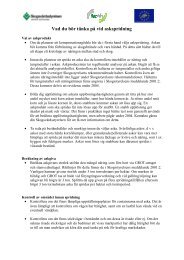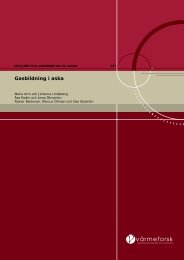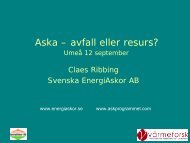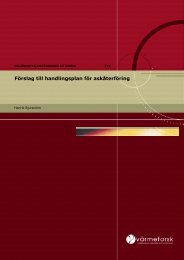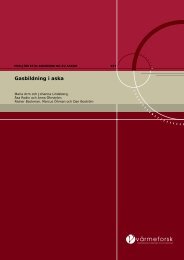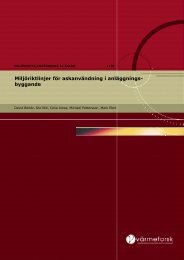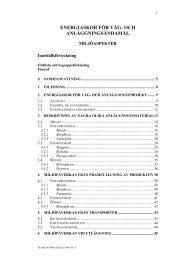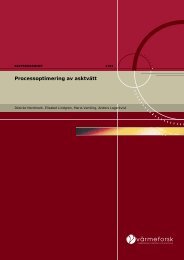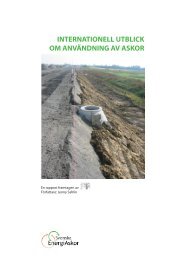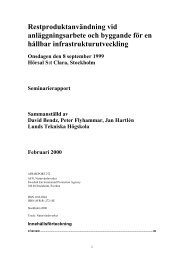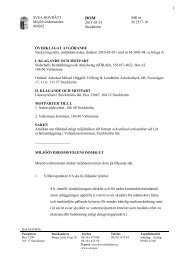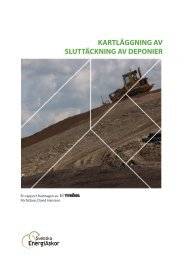rapport 1129 Potentialbedömning av flygaskor ...
rapport 1129 Potentialbedömning av flygaskor ...
rapport 1129 Potentialbedömning av flygaskor ...
Create successful ePaper yourself
Turn your PDF publications into a flip-book with our unique Google optimized e-Paper software.
VÄRMEFORSK<br />
sary compressive strength. The results show that the compressive strength decreases if<br />
wet-stored fly ash is used in the stabilised samples compared with the use of dry fly ash<br />
instead.<br />
Sediment<br />
Sediments from the Port of Gävle entry channel are sulphatic silty sediments with approximately<br />
5% organic content (TOC). Water quota is between 329 and 370%. The<br />
sediment’s pollutant content and pollutant levels were compared to those in some other<br />
Swedish ports and therefore can be considered representative of sediment in Swedish<br />
ports.<br />
S / S Treatment – Properties in Terms of Technology and Environment<br />
Fly ashes A1–A5 were used as a binder together with C / M. No clear correlation<br />
between the key parameters of fly ashes and the obtained compressive strengths of the<br />
stabilised samples can be identified, except that the minimum compressive strength was<br />
obtained with the fly ash with lowest CaO content and the maximum compressive<br />
strength with a maximum content of CaO. The binder composition was 50% cement,<br />
20% Merit 5000 and 30% fly ash (A1–A5). The amount of binder was 150 kg/m 3 .<br />
Figure 1 presents the compressive strength results summarized for the stabilisation of<br />
the two sediments and the five different binder mixtures. All binder mixtures A1–A5<br />
passed the basic criterion of compressive strength > 140 kPa after 91 days, see Figure 1.<br />
The median of the investigated sediments’ compressive strength was more than 500 kPa<br />
after 91 days and the minimum compressive strength was about 300 kPa, which was<br />
achieved with A2. The highest value was achieved with A1, around 780 kPa. All samples<br />
yielded permeability values between 10 -8 m / s and 10 -9 m / s after 91 days. Since<br />
batch test were performed on the stabilised material, the leaching of organic pollutants<br />
is barely detectable. Even the leaching of metals was low in these tests.<br />
Tryckhållfasthet. kPa<br />
800<br />
700<br />
600<br />
500<br />
400<br />
300<br />
200<br />
100<br />
0<br />
28 dygn 91 dygn<br />
Figure 1 Compressive strength results as median, maximum and minimum values of the binder<br />
mixtures A1–A5 for the investigated sediments. The amount of binders was 150 kg/m 3 – the<br />
recipe mixture was C / M / A (50/20/30), where A is A1–A5.<br />
Finances<br />
In a s / s project, there are usually large volumes of dredged material to be stabilised,<br />
which require large volumes of binders. Normally, the binder quantity is 100–200 kg/m 3<br />
ix



